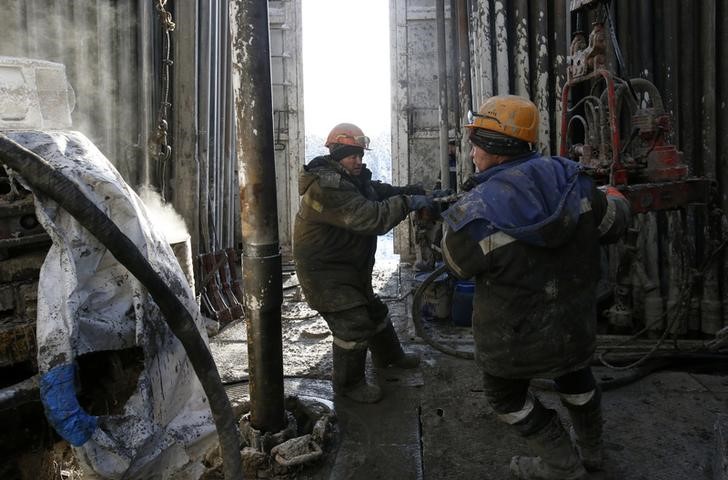Investing.com - Crude oil prices trended slightly lower in Asia on Friday with investors again weighing prospects of some kind of deal on an output freeze by major producers and ahead of U.S. rig count data.
On the New York Mercantile Exchange, WTI crude for April delivery eased 0.05% to $40.18 a barrel. Brent crude fell 0.24% to $41.44 a barrel.
Overnight, U.S. crude surged more than 4% on Thursday closing above $40 for the first time in more than three months, as the dollar continued its downward spiral in the wake of the Federal Reserve's dovish monetary policy decision 24 hours earlier.
On the Intercontinental Exchange (ICE), Brent crude for May delivery wavered between $40.19 and $41.59 a barrel, before closing at $41.54, up $1.20 or 2.95% on the session. North Sea crude futures have also rallied sharply over the last month and a half after falling below $30 a barrel for a single session in mid-February.
The dollar fell precipitously on Thursday for the second straight session, one day after the Federal Open Market Committee (FOMC) maintained the target range on its benchmark Federal Funds Rate at a level between 0.25 and 0.50%. Currency traders on global foreign exchange markets continued to parse statements from Federal Reserve chair Janet Yellen, after the FOMC cut its interest rate forecast by 50 basis points for 2016 and another 50 basis points by the end of next year.
The latest rally was triggered by reports on Wednesday that OPEC and Non-OPEC producers will meet in mid-April in Doha in their latest effort to stabilize oil prices. The comments from Qatar oil minister Mohammed bin Saleh Al-Sada could signal that a breakthrough in tense discussions may be imminent. The meeting will take place approximately a month and a half after Saudi Arabia, Russia and two other OPEC members agreed on a deal in principle to freeze production at their respective levels from January. Next month's meeting will be held regardless of Iran willingness to join in on the talks, Al-Sada said, representing a shift in OPEC's stance on limiting production.
Iranian exports increased to 1.55 million barrels per day in January, according to Saudi-based Joint Organisations Data Initiative, their highest level since March, 2014. Production, meanwhile, surged to 3.37 million bpd, the highest in nearly two years. Iran is reluctant to cap output until it reaches pre-sanction levels of 4 million barrels per day.
